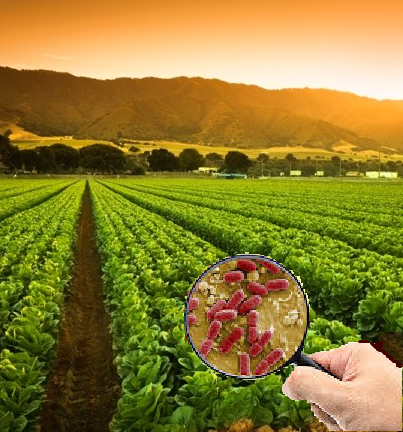Leafy greens contaminated with STEC are a significant public health problem and were the source of 40 outbreaks in the United States and Canada from 2009 to 2018. Scientists from the FDA and CDC share the investigation process of recent outbreaks of E. coli in leafy greens (Irvin et al., 2021. An Overview of Traceback Investigations and Three Case Studies of Recent Outbreaks of Escherichia coli O157:H7 Infections Linked to Romaine Lettuce J Food Prot (2021) 84 (8): 1340–1356). Traceback investigations of three outbreaks of Shiga toxin-producing E. coli infections linked to romaine lettuce in 2018 and 2019 were examined to demonstrate challenges, limitations, and opportunities for improvement. The three outbreaks resulted in a total of 474 illnesses, 215 hospitalizations, and 5 deaths. Challenges in the investigation included the time it took to initiate a traceback, limited product-identifying information, lack of record-keeping systems, and comingling of products from multiple suppliers. More work is needed to improve and standardize strategies to improve the speed at which sources are identified and prevent additional illnesses. @ https://meridian.allenpress.com/jfp/article/84/8/1340/463972/An-Overview-of-Traceback-Investigations-and-Three
ruth
ruth
The USDA/FSIS reported that Blount Fine Foods, a McKinney, Texas establishment, recalled approximately 6,384 pounds of chicken tortilla soup products contaminated with pieces of a gray nitrile glove. The fully cooked, ready-to-eat chicken tortilla soup was produced on July 1, 2021, and was sold in 16-oz plastic containers of “Panera BREAD at HOME Chicken Tortilla Soup” with lot code 070121-1V and “Use By 09/09/2021” on the label. These products were shipped to retail locations in Arizona, Florida, Georgia, and Texas. The problem was discovered after the company notified FSIS that they received several consumer complaints reporting pieces of gray nitrile glove in the product. There have been no confirmed reports of adverse reactions due to the consumption of these products. @ https://www.fsis.usda.gov/recalls-alerts/blount-fine-foods-corp.-recalls-chicken-soup-products-due-possible-foreign-matter
ruth
According to the CFIA, Taste for Luxury (Kingston Ontario) has recalled Luigi Guffanti branded Cheese Taleggio Dop a Latte Crudo Incarto Verde from the Canadian marketplace due to suspected Staphylococcus aureus. The recalled product is Luigi Guffanti branded Cheese Taleggio Dop a Latte Crudo Incarto Verde, packaged in variable-sized portions of approximately 1.8 kilograms. These Cheese products were marketed, distributed, and sold in the Canadian province of Ontario @https://healthycanadians.gc.ca/recall-alert-rappel-avis/inspection/2021/76153r-eng.php
Luigi Guffanti brand Cheese Taleggio Dop a Latte Crudo Incarto Verde recalled due to Staphylococcus aureus
ruth
On July 18, Pure Éire Dairy and Creamery of Othello, Washington, closed its doors after a decade in business. In May, The Washington State Department of Health (DOH) announced that it had identified six cases of E. coli causing illnesses in multiple counties in Washington State. Three individuals required hospitalization, and one developed hemolytic uremic syndrome (HUS). By June 23, the DOH had linked the outbreak to those who had either consumed or been in contact with consumers of Pure Éire Dairy PCC Community Market brand yogurt. 17 people developed E. coli infections, 10 were hospitalized, 4 developed HUS, and none died. Due to the investigation, the dairy stopped producing the yogurt and eventually closed its doors. While the company denies a connection, the company is subject to two lawsuits filed in Washington State on behalf of minor children who allegedly became ill after consuming Pure Éire yogurt, claiming negligence on the part of the dairy brand. @ https://bestlifeonline.com/news-pure-eire-dairy-closed/
After a major yogurt recall, a popular dairy company has shut its doors for good over concerns about the safety of its products.




